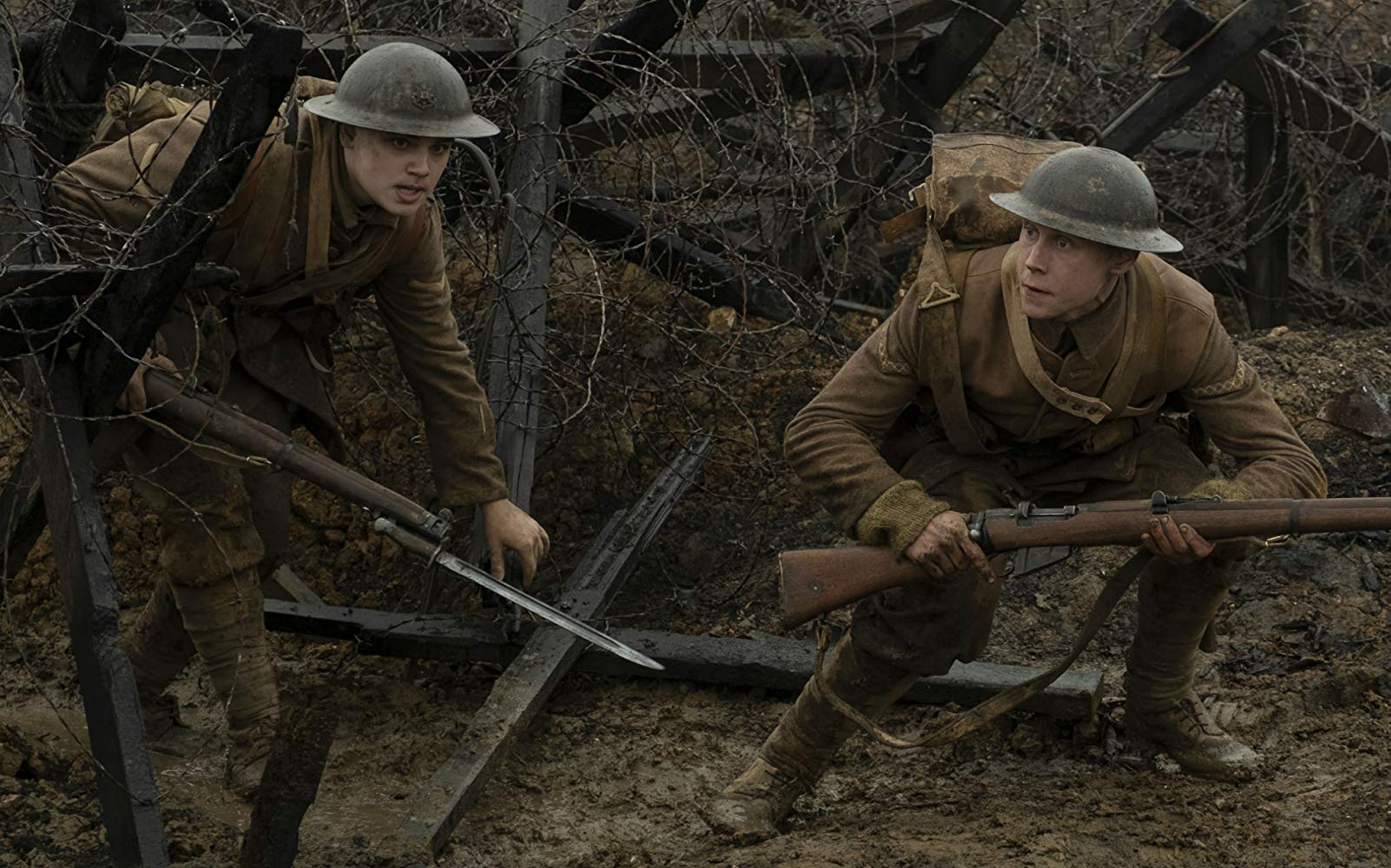Of the many war movies out there, very few have been able to provide a powerful storyline, accompanied by a graphic and accurate portrayal of the horrific day-to-day life of soldiers in the muddy trenches of the Western Front of the First World War. Other than Steven Spielberg’s War Horse and Paul Gross’s 2008 Canadian production, Passchendaele, good First World War movies are a rare commodity.
My standards for war movies are very high. My ideal war movie needs to be historically truthful, visually accurate, and one which presents a storyline that respects the sacrifices of the dead while also not overstating the role of the protagonist’s side. I get these standards from my grandfather, who fought in the Second World War, and my other family members who have served in the Canadian Forces. For these reasons, I went into 1917 with high hopes.
Some context: April 1917 was the height of the First World War. The battles were mostly back-and-forward “over-the-top” skirmishes between Allied and Entente trenches. In northeastern France, some German forces were engaging in a strategic retreat, during which, they planned to pull back their front line troops, regroup, and launch a counterattack with stronger, more prepared soldiers.
The movie picks up on April 6, 1917. On a calm morning, we’re introduced to British lance corporals Will Schofield (George MacKay) and Tom Blake (Dean-Charles Chapman), who are sleeping outside of their battalion’s trenches. An officer approaches them and tells them that they are to meet with a general. They are assigned the dangerous mission to trek through nine miles of no man’s land to deliver a message to the 2nd Battalion of the Devonshire Regiment. The message: to call off the next morning’s attack, or risk losing 1,600 men in a German counterattack. Blake’s brother is a lieutenant with the Devons, so he is eager to get to their line as soon as possible.

Throughout the trek, they must walk through the muddy and crater-filled terrain of the front line, crawl through enemy barbed wire, and move without ease as they stumble upon dead bodies being feasted upon by rats. They must also survive enemy sniper fire, carefully clear a German bunker, and witness a dogfight between British and German biplanes.
The specific plotline of 1917 is made up, but according to Smithsonian Magazine, director Sam Mendes said he was inspired by a story he was told by his grandfather Alfred, who fought in the First World War. Also, several historical accounts show that having a soldier deliver a message was often the most reliable form of communication. According to Canadian historian Pierre Berton in his book about the Battle of Vimy Ridge, titled Vimy, other communication methods–notably radio, telephone and carrier pigeon–were unreliable due to weather, artillery damage and other technical malfunctions.
Regardless, 1917 met my expectations of exactly what I was hoping to get from a First World War movie, through its portrayal of trench warfare and its brilliant cinematography.
If you’ve ever seen historical photos of the Western Front, you would see what the battlegrounds were like. Trenches were cold and crowded places, where soldiers lived in filth, surrounded by rats and insects. The space between enemy trenches–also known as no man’s land–was muddy, filled with deep artillery craters, and scattered with dead bodies. 1917 did not shy away from this reality, forcing audience members to see what millions of young men had to face at the time.
The cinematography was outstanding. With cinematographer Roger Deakins at his side, Mendes successfully made the film look like it was one long shot. The camera rarely pans away from the main characters, as it follows them on their dangerous journey. The crew accomplished this by mounting the camera on wires, a drone, a pick-up truck, and at one point the back of a motorcycle. Seeing how far they went to make this cinematic adventure come to life adds to the appreciation you have for how incredible the camera work was.

Ultimately, the film doesn’t shy away from more challenging topics. Notably, its portrayal of death in the war, and how surviving soldiers must respond to it.
This movie hit me on a personal level because I have many family connections to the First World War. After visiting several memorial sites in Europe, including the intact no man’s land in Beaumont-Hamel, France, I felt the movie accomplished its mission to show audiences what these young men had to go through.
If you have no interest in military history, or you don’t like realistic violent thriller movies, this movie is probably not for you. However, if you are interested in the First World War, and you want to understand how brutal the front line soldiers’ sacrifice was, watch this movie. It is thrilling, emotional, and will make you want to look back on our history.
Featured image provided by IMDB.






